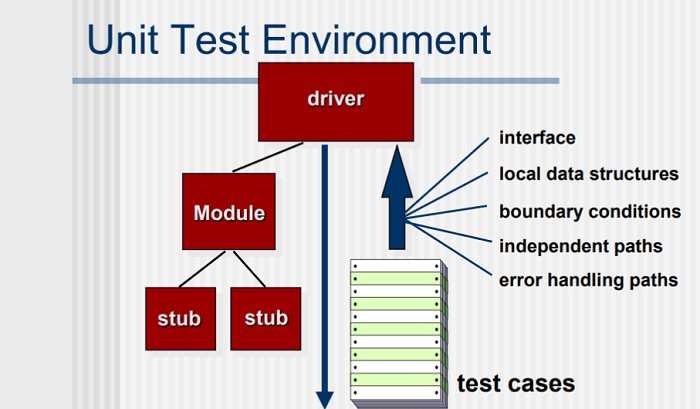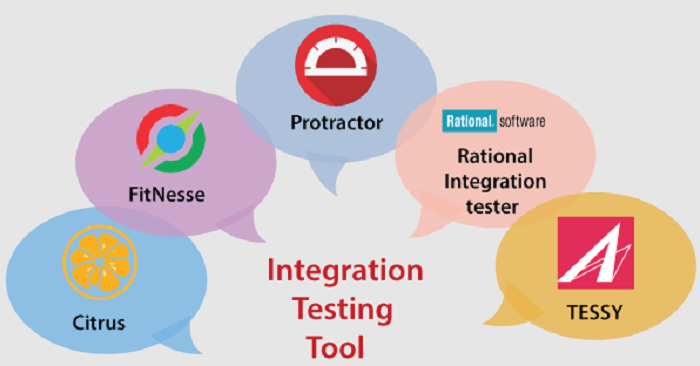The process of developing software must include software testing. It aids in ensuring that the software program functions as planned and satisfies end-user requirements. Yet, there is the employment of several strategies and methods during testing. Unit testing vs integration testing is the two most popular testing methods.
During phases of the software development process, unit testing and integration testing are two different testing methodologies that utilize. Although Integration Testing focuses on testing the interaction between various units or components of the software application, Unit Testing concerns individually testing each unit or component of the software program. The choice of which style of testing to adapt will rely on the specific requirements and goals of the software development project. Game development companies can also ensure high-quality games by utilizing the Game testing services by QAwerk. Both methods of testing have certain advantages and disadvantages.
In order to assist you to choose the technique that is best for you, we will examine the main distinctions between Unit testing vs integration testing in this post. To give you a thorough grasp of the distinctions between Unit Testing and Integrated Testing, we’ll look at the scope, testing environment, testing depth, testing tools, and advantages of each form of testing.
See Also: Top 4 Free Cloud Storage Services Of 2024
How does unit testing work?
Specifically, testing individual software application parts or components is the emphasis of unit testing, a sort of software testing. Unit is the smallest tested component of an application and might be a single function or method. Software engineers often conduct unit testing throughout the coding phase of the software development process.
Software engineers often conduct unit testing throughout the coding phase of the software development process.
Unit testing is of use to ensure that every component of the software program is operating as intended. Unit tests are automated tests created to test every unit independently, not relying on other software program components.
As a result, developers may swiftly find and resolve any problems in individual units before going on to integration testing.
Integration Testing: What is it?
Software testing, known as “integration testing,” focuses on evaluating how well various parts or units of a software program work together. Integration testing usually occurs when unit testing finishes before the software application publishes. Integrity testing ensures that each of the software application’s separate parts or components functions as intended. To examine how various units interact and spot any potential problems, there is creation of Integration tests.
Integrity testing ensures that each of the software application’s separate parts or components functions as intended. To examine how various units interact and spot any potential problems, there is creation of Integration tests.
Unit testing vs integration testing
The aims of unit testing and integration testing in the software development process differ. The following are the main contrasts between unit testing and integration testing.
Scope
Unit is considered the smallest testable component of an application, such as a single function or method. There are tests of each software application’s parts or components as a result of unit testing. Software engineers often perform unit testing at the software development process’s coding stage.
Software engineers often perform unit testing at the software development process’s coding stage.
Unit testing ensures that every software program component functions as it should. Automated tests called “unit tests” are made to test each unit independently, without reference to other software program components.
Contrarily, integration testing concentrates on verifying the interaction and integration between various parts or sections of a software program.
Unit testing is usually followed by integration testing. Integration testing is usually carried out when unit testing is finished before the software application is published.
Testing Environment
Unit testing is conducted in a development environment for testing individual code pieces. This environment often cut off from the rest of the software program, may have specialized tools and testing frameworks made specifically for unit-level code testing. Unit testing often occurs in a controlled, predictable environment with few external dependencies. This increases the accuracy and dependability of the findings of the unit testing.
Unit testing often occurs in a controlled, predictable environment with few external dependencies. This increases the accuracy and dependability of the findings of the unit testing.
On the other hand, integration testing needs a more complex testing environment containing every part or testing unit of the software program. It’s possible that this environment is more complicated than the development environment used for unit testing and may comprise a combination of hardware and software components.
Usually, integration testing carries out in a setting more akin to the actual setting where the software program will be in use, called a production setting.
Testing Depth
Unit testing using verifies that each software program component is functioning as planned. Integration testing has a lower testing depth than unit testing. This is so that each unit or component of the software program may be tested separately, which is the main goal of unit testing.
This is so that each unit or component of the software program may be tested separately, which is the main goal of unit testing.
Software engineers perform unit testing most often, and the test automates and tests the unit in as much detail as feasible. To ensure that each unit is complete, unit testing may now be more precise and concentrate on specific lines of code.
Integrity testing ensures that each software application’s separate parts or components function as intended. This is so that the software application interaction between its many parts or components may test rather than just those individual units. The testing depth of integration testing is less than that of unit testing.
Testing Tools
Tools for testing software applications’ constituent modules or components use in unit testing. These tools include frameworks for automating the testing of specific pieces of code, such as JUnit, NUnit, and TestNG. These frameworks allow developers to rapidly and effectively write and carry out unit tests. While also offering reporting and analysis of test results. Tools for unit testing often concentrate on the technical components of testing, including code coverage and error detection, rather than the overall operation of the software program.
These frameworks allow developers to rapidly and effectively write and carry out unit tests. While also offering reporting and analysis of test results. Tools for unit testing often concentrate on the technical components of testing, including code coverage and error detection, rather than the overall operation of the software program.
Contrarily, integration testing frequently uses testing equipment to examine how various parts or units of the software program interact with one another. These technologies include frameworks like Selenium, Cucumber, and Behave that intend to automate the testing of various software application components and the communication between them.
Which One Is Best for You?
The size and complexity of the software application, the project’s timeframe and budget, and the team’s abilities and resources are some variables that affect whether Unit testing vs integration testing (or both) should be of use.
Unit testing could be enough to verify that a software program is stable and functional, whether small or reasonably basic. Unit testing may assist in identifying problems early in the development process, ultimately saving time and costs.
Integration testing requires if you work on a bigger or more complicated software program to ensure that all the different units or components function together as the plan. Conflicts between various units or problems with data flow across units are only two problems that may come up during integration testing.
In general, utilising both unit and integration testing ensures a software program is dependable, satisfies end-user requirements, and is functional. While integration testing can assist in verifying that all of the separate units or components are functioning as intended, unit testing can help identify problems early in the development process.
FAQs
What distinguishes Unit testing vs integration testing?
Although Integration Testing focuses on testing the interaction between various units or components of the software application, Unit Testing is concerned with individually testing each unit or component of the software program.
What kind of testing should I use for my software development project?
Your software development project's requirements and goals will determine the testing used. Unit testing is the ideal strategy if you wish to test individual software program parts or units separately. Integration Testing is the ideal strategy to test how multiple parts or units of your software program interact.
What advantages does unit testing offer?
A few advantages of unit testing are early issue identification, enhanced productivity, better code quality, and quicker development cycles.
What advantages does integration testing offer?
Integration testing provides several advantages, including enhanced user experience, better overall software quality, and the ability to find flaws. And problems that may occur due to interactions between various units or components of the software program.
Conclusion
Unit testing vs integration testing is a crucial step in software development. Because they help to ensure that a software program is dependable, functional, and satisfies user demands.
Whether you use unit testing, integration testing, or both, ensure you test your software program completely. Test before making it available to end customers.
Choose the best strategy if you know the distinctions between unit and integration testing, and consider your project’s unique requirements.
See Also: Free Apple Developer Account | 50+ Usernames And Password List

Max Parker is the Deputy Editor for FreeAccountsOnline. He also directly manages FreeAccountsOnline’s Internet, and Social sections. Max joined FreeAccountsOnline as a features writer in 2017.







